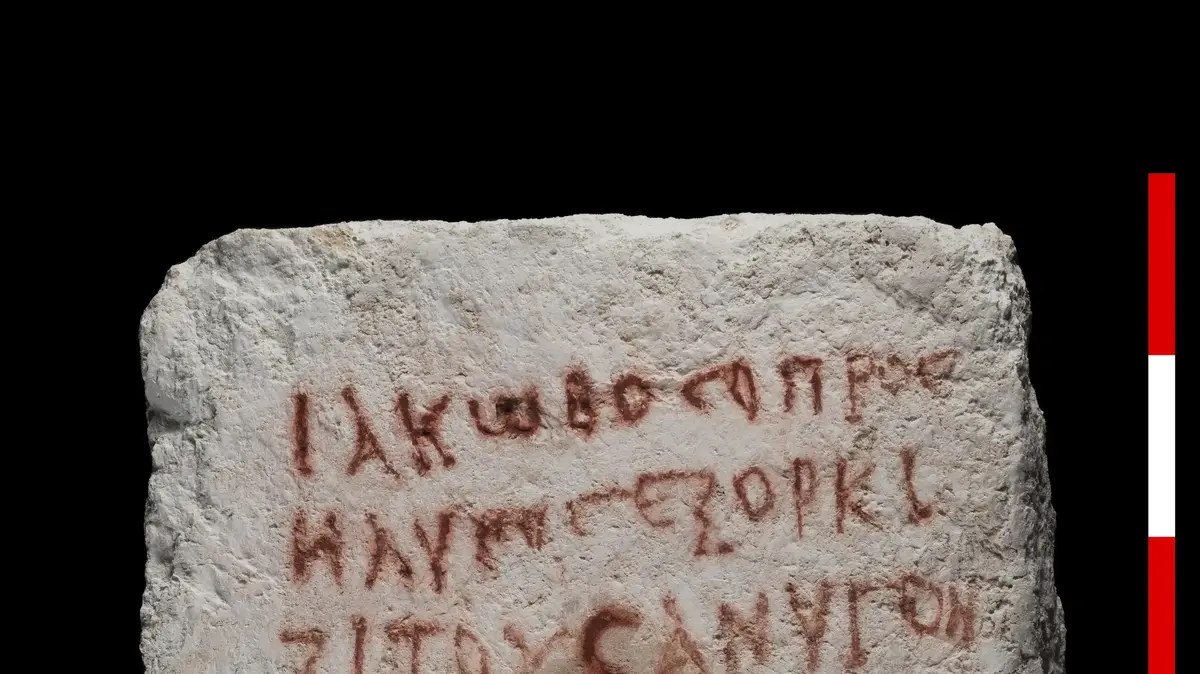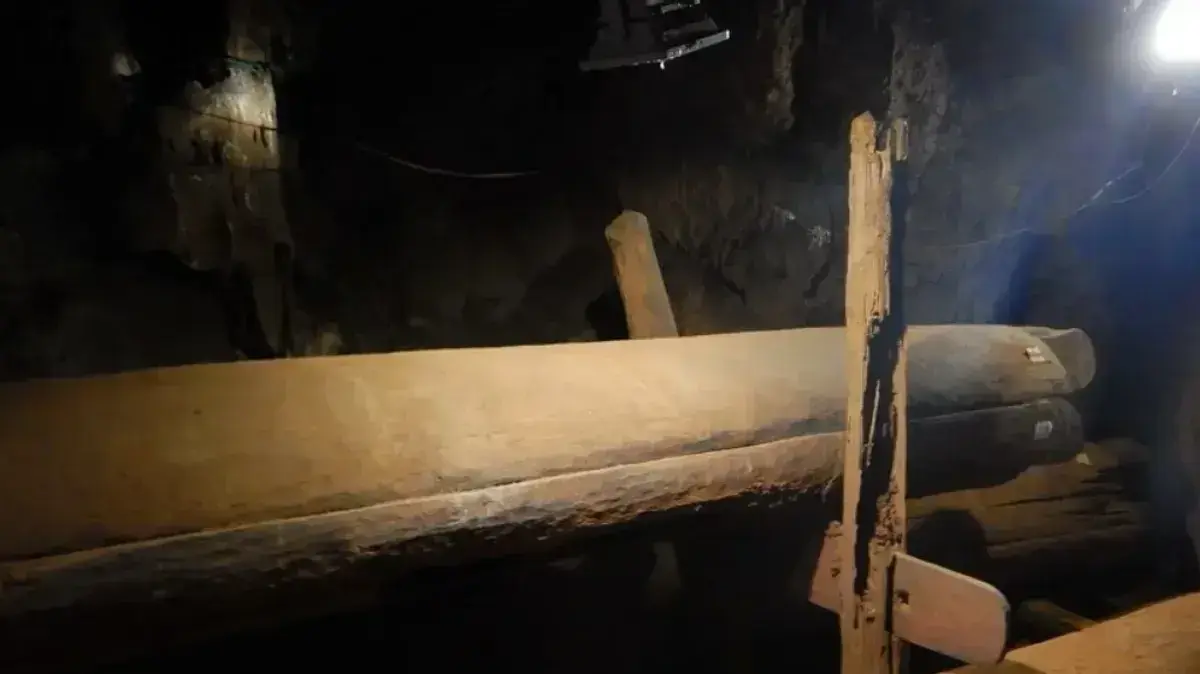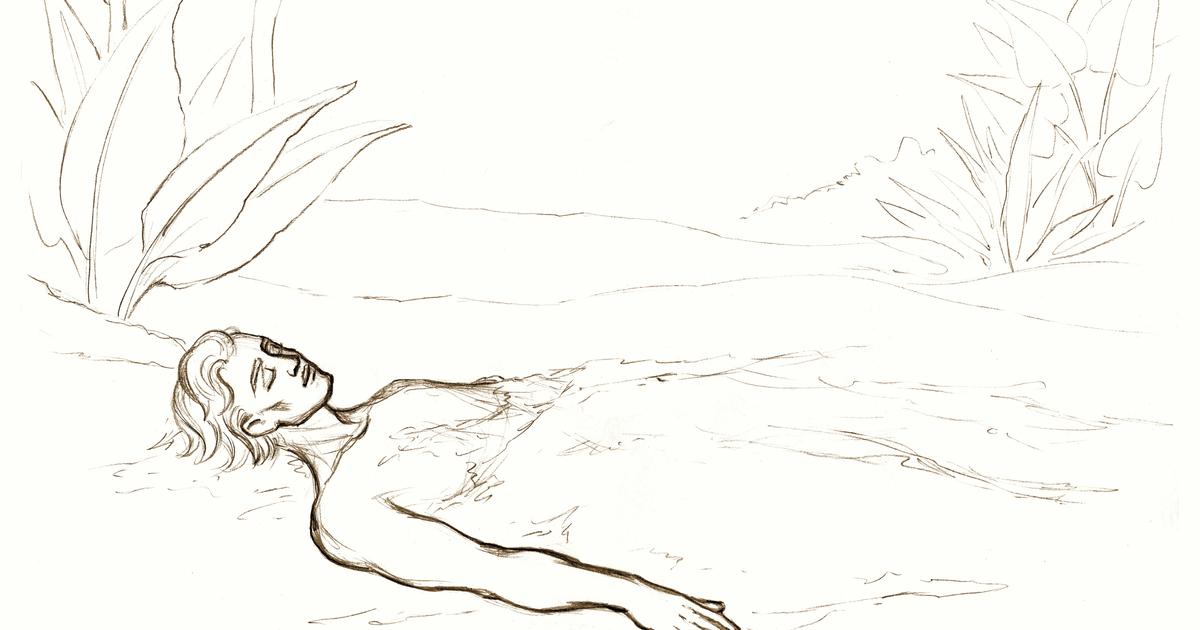An inscription from a burial cave from Beit Shearim revealed the identity of the deceased: "Yaakov Hagar"
"Yaakov Hagar, swears by those who will open the tomb that no one will open it. He is 60 years old," reads a stone tablet in a burial cave in Beit Shearim in the Lower Galilee, which dates back to about 1800 years ago.
Ziv Reinstein
01/06/2022
Wednesday, 01 June 2022, 09:13 Updated: 21:02
Share on Facebook
Share on WhatsApp
Share on Twitter
Share on Email
Share on general
Comments
Comments
An inscription from about 1800 years ago that was recently unveiled in a burial cave in Beit Shearim, reveals the name of the buried and no less interesting, his identity: "Yaakov Hagar".
"The inscription is from the Late Roman or Early Byzantine period, when Christianity was strengthened. And yet, we find evidence that there are still people who choose to join the Jewish people," said Prof. Adi Erlich of the Zinman Institute of Archeology at the University of Haifa, who heads the excavations at Beit Shearim On
the
weekend of Shavuot, which is the weekend, the Book of Ruth is read, and the story of Ruth the Moabite after her husband's death adhered to Judaism, "Your people are my people and your God is divine," At the Israel Antiquities Authority, Prof. Ehrlich and Prof. Jonathan Price of Tel Aviv University will unveil an inscription that was recently found in a new burial cave in Beit Shearim with the inscription of one of the people buried in the cave: Yaakov Hager.
More on Walla!
New discoveries: Is the gate of the ancient "Beit Shearim" settlement located?
To the full article
"Yaakov Hagar, satisfies those who will open the tomb that no one will open it. 60 years old."
The inscription in Beit Shearim (Photo: Israel Antiquities Authority, Yevgeny Ostrovsky)
Not just the first address revealed in Beit Shearim
Beit Shearim in the Lower Galilee was a major Jewish settlement during the Mishnah and Talmudic periods (second to fifth centuries AD).
The main publicity of the settlement is in the important cemetery where the deputy editor, Rabbi Yehuda Hanasi, was buried, as well as many Jews from Eretz Israel and the Diaspora.
The place is now a national park, and the cemetery was even recognized as a World Heritage Site several years ago.
In the cemetery that was excavated about eighty years ago, many inscriptions were discovered that tell of the Jews who were buried there, the inscriptions in various languages, and especially in Greek, which was then an accepted spoken language.
About a year ago, Jonathan Orlin, head of conservation in the north at the Nature and Parks Authority, accidentally discovered a new burial cave that had not been known until now.
The cave led to additional caves that were connected by gaps that had been breached in the walls in ancient times.
Two inscriptions in Greek were discovered in the innermost room and in complete darkness.
The inscriptions were deciphered by Prof. Price: In the small inscription painted in red on the wall near the burial lodge, the name "Judah" was written and he was the owner of the tomb.
The larger inscription, written in red on a stone slab lying in a cave and leaning against the opening of the same alcove, included 8 lines with the words: "Jacob Hagar, swears by those who will open the tomb that no one will open it. 60 years old."
The number 60 was written in a different script and therefore the researchers estimate that it may have been written by his relatives, after his death.
According to the researchers, this is not only the first inscription revealed in Beit Shearim in the last 65 years, it is also the first in which it is explicitly mentioned that the buried is a resident.
They further added that inscriptions attesting to the settlers are not common, and of those that have been uncovered in the past, most from the Second Temple period or the Early Roman period - times when Judaism was the dominant identity in Judea.
"The present find is one of the few in which an excellent late Roman period dweller," the researchers said.
"The present find is one of the few in which an excellent resident from the Late Roman period is excellent" (Photo: Israel Antiquities Authority, Yevgeny Ostrovsky)
The address may be displayed to the public in the future
The Late Roman period, in the third and fourth centuries AD, is the period in which Christianity begins to strengthen and later even becomes the dominant religion in the Roman Empire.
"The inscription teaches us important information about life in the Galilee of that period, which was the center of the Jewish settlement after the destruction of Judah in the Bar Kochba revolt in 135 AD. "The Jewish religion is proudly declared and declared. The inscription was handed over to the Israel Antiquities Authority and is kept there under appropriate preservation conditions. .
According to the director of the Israel Antiquities Authority, Eli Escozido, "The inscription is a very important archeological find, which must be presented to the public along with all the Beit She'arim finds.
Tourism
news
Tags
Gates House
Archeology














/cloudfront-eu-central-1.images.arcpublishing.com/prisa/IGZ7GOCXZ5GUPAQ2HWGK6Z76BU.jpg)